Traduction générée automatiquement
Montrer le texte original
Montrer le texte traduit
Important charcoal drawing on paper by the great 19th century Italian artist Teofilo Patini.
It represents a man with a thoughtful look taken in three-quarters of rare intensity and beauty.
Period Second half of the tenth-ninth century
Dimensions
Height 47 cm
Width 31 cm
Certificate of authenticity issued by Sabrina Egidi Expert of the Court and of the C.C.I.A.A. of Rome.
This item comes from a private collector and is therefore unreleased on the market
Teofilo Patini
A native of Castel di Sangro, in the province of L'Aquila, he initially studied philosophy at the University of Naples, before enrolling in the painting courses at the Academy of Fine Arts in the same city in July 1856.
He had Giuseppe Mancinelli, Giovanni Salomone and Biagio Molinari as teachers and soon became linked to the group of painters headed by Filippo Palizzi, of whom he was a fervent pupil.
He made study trips to Florence (1868) and Rome (1870), before returning to Castel di Sangro in 1873.
He then moved to L'Aquila where in 1882 he founded the "School of Arts and Crafts", in which, among others, Domenico Cifani, Giovanni Feneziani and Tito Pellicciotti studied.
Patini lived in the Abruzzo capital and established his atelier in the monumental Ardinghelli palace, in the Santa Maria quarter, owned by the Cappelli family.
In 1898 he participated in the Italian General Exhibition in Turin.
In 1896 he was initiated into Freemasonry in the L'Aquila lodge, named after Fabio Cannella, and in the early twentieth century he was a member of the Cosmogenesi lodge in the same city.
One of his last works was the fresco in the great hall of the University of Naples.
He lived in L'Aquila for a long time before returning to his hometown shortly before his death.
In 1873 he had Giuseppina from Teresa Tamposchi.
He was buried in the monumental cemetery of Poggioreale in Naples, in the sector dedicated to artists.
As a profound and pure socialist that he was, he painted paintings portraying the peasant civilization of Abruzzo at the end of the 19th century and the beginning of the 20th century, highlighting the "poverty condition of the region" and the "capacity for resistance and sacrifice of the population"; as well as his profound passion, painting was the megaphone with which he shouted to the world the miserable conditions of his people, a megaphone which he would ideally deliver to Ignazio Silone, the writer from Fontamara.
In particular, three of his works had a strong political connotation and are therefore considered to be part of a "social trilogy": Spade and Milk, The Heir and Beasts of Burden. He also dedicated himself to representing sacred images, in paintings and frescoes.
Regarding the painting The Heir, this is what Giovanni Fattori wrote to Primo Levi in February 1903: «I will weakly send my soldiers who fought for independence rewarded with the propatria known to you, moreover I have searched into the social wounds and I found a poor brewer whose old horse is dying - Poverty - realism has given him the heir - and tell me a little how to compare this piece of work of truth and feeling with the beautiful nude figures of Sartorio - larger than truly obscene without saying anything, and doing nothing - here we cry, there we yawn.
Inside Palazzo De Petra in Castel di Sangro there is the Patiniana art gallery, a permanent exhibition entirely dedicated to the works of Patini and his students.
Among the works of great historical-artistic importance, the majestic Beasts of Burden stands out, preserved until 2009 at the Government Palace in L'Aquila and moved there temporarily following the earthquake of 6 April of the same year.
In Naples, in the Gallery of the Academy of Fine Arts, three works by Teofilo Patini are preserved: Edward III and the prisoners of Calais, 1868; Gypsy, 1870; The Heir, 1875.
Important dessin au fusain sur papier du grand artiste italien du XIXe siècle Teofilo Patini.
Il représente un homme au regard pensif pris de trois-quarts d'une intensité et d'une beauté rares.
Période Seconde moitié du Xe-XIXe siècle
Dimensions de l'œuvre
Hauteur 47 cm
Largeur 31 cm
Certificat d'authenticité délivré par Sabrina Egidi Expert de la Cour et du C.C.I.A.A. de Rome.
Cet objet provient d'un collectionneur privé et est donc inédit sur le marché
Teofilo Patini
Originaire de Castel di Sangro, dans la province de L'Aquila, il étudie d'abord la philosophie à l'université de Naples, avant de s'inscrire, en juillet 1856, aux cours de peinture de l'Académie des beaux-arts de cette même ville.
Il a pour professeurs Giuseppe Mancinelli, Giovanni Salomone et Biagio Molinari et se lie rapidement au groupe de peintres dirigé par Filippo Palizzi, dont il est un fervent élève.
Il effectue des voyages d'études à Florence (1868) et à Rome (1870), avant de revenir à Castel di Sangro en 1873.
Il s'installe ensuite à L'Aquila où il fonde en 1882 l'"École des arts et métiers", dans laquelle étudient notamment Domenico Cifani, Giovanni Feneziani et Tito Pellicciotti.
Patini vécut dans la capitale des Abruzzes et installa son atelier dans le monumental palais Ardinghelli, dans le quartier de Santa Maria, propriété de la famille Cappelli.
En 1898, il participe à l'exposition générale italienne de Turin.
En 1896, il est initié à la franc-maçonnerie dans la loge L'Aquila, qui porte le nom de Fabio Cannella, et au début du XXe siècle, il est membre de la loge Cosmogenesi dans la même ville.
L'une de ses dernières œuvres est la fresque de la grande salle de l'université de Naples.
Il a longtemps vécu à L'Aquila avant de retourner dans sa ville natale peu avant sa mort.
En 1873, il eut Giuseppina de Teresa Tamposchi.
Il est enterré dans le cimetière monumental de Poggioreale à Naples, dans le secteur dédié aux artistes.
En tant que socialiste profond et pur qu'il était, il peignit des tableaux représentant la civilisation paysanne des Abruzzes à la fin du XIXe siècle et au début du XXe siècle, soulignant la "condition de pauvreté de la région" et la "capacité de résistance et de sacrifice de la population" ; outre sa profonde passion, la peinture était le mégaphone avec lequel il criait au monde les conditions misérables de son peuple, un mégaphone qu'il remettrait idéalement à Ignazio Silone, l'écrivain de Fontamara.
Trois de ses œuvres, en particulier, avaient une forte connotation politique et sont donc considérées comme faisant partie d'une "trilogie sociale" : Bêche et lait, L'héritier et Bêtes de somme. Il s'est également consacré à la représentation d'images sacrées, dans des peintures et des fresques.
À propos du tableau L'héritier, voici ce que Giovanni Fattori écrit à Primo Levi en février 1903 : "J'enverrai faiblement mes soldats qui ont combattu pour l'indépendance récompensés par la propatria que vous connaissez, de plus j'ai cherché dans les plaies sociales et j'ai trouvé un pauvre brasseur dont le vieux cheval se meurt - Pauvreté - le réalisme lui a donné l'héritier - et dites-moi un peu comment comparer cette œuvre de vérité et de sentiment avec les belles figures nues de Sartorio - plus que vraiment obscènes sans rien dire, et sans rien faire - ici on pleure, là on bâille.
À l'intérieur du Palazzo De Petra à Castel di Sangro se trouve la galerie d'art Patiniana, une exposition permanente entièrement consacrée aux œuvres de Patini et de ses élèves.
Parmi les œuvres de grande importance historico-artistique, on remarque les majestueuses Bêtes de somme, conservées jusqu'en 2009 au palais du gouvernement de L'Aquila et déplacées temporairement à la suite du tremblement de terre du 6 avril de la même année.
À Naples, dans la galerie de l'Académie des beaux-arts, trois œuvres de Teofilo Patini sont conservées : Édouard III et les prisonniers de Calais, 1868 ; Gitan, 1870 ; L'héritier, 1875.
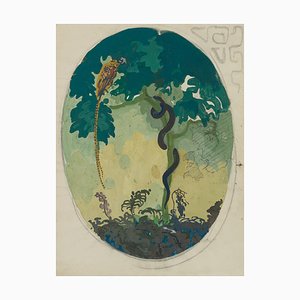
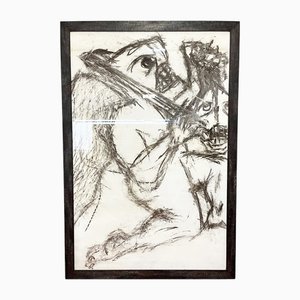
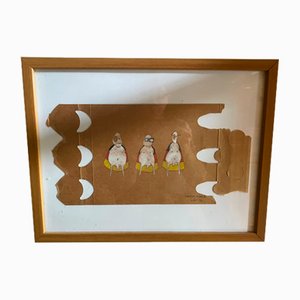
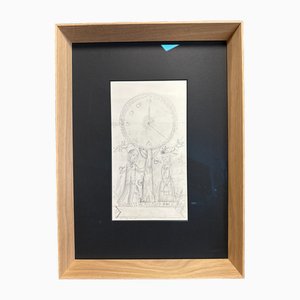




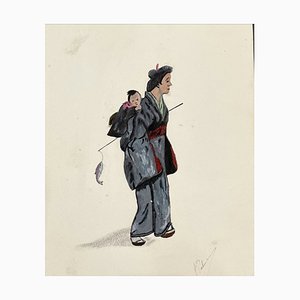
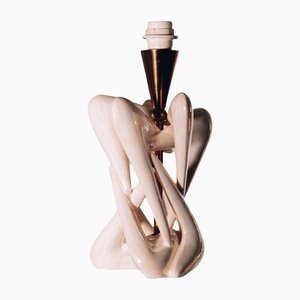
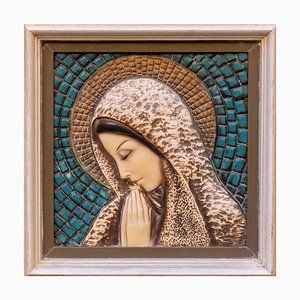
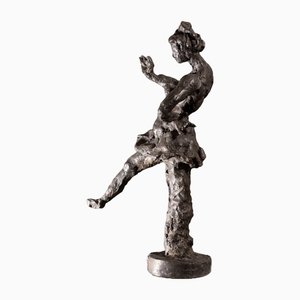




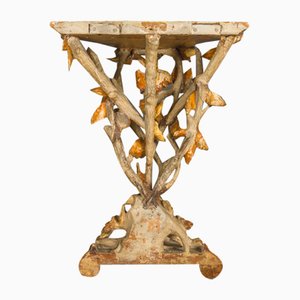

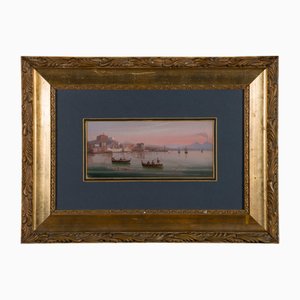



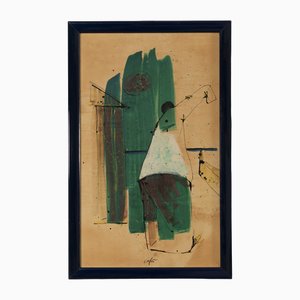

Contactez-nous
Faire une offre
Nous avons remarqué que vous êtes nouveau sur Pamono !
Veuillez accepter les Termes, Conditions et Politique de Confidentialité
Contactez-nous
Faire une offre
Vous y êtes presque!
Pour suivre votre conversation sur la plateforme, merci de compléter votre enregistrement Pour procéder avec votre offre sur la plateforme, veuillez compléter l’enregistrement.Envoyé!
Merci pour votre message, un membre de notre équipe vous contactera rapidemment
Si vous etes un professionnel du design, merci de vous inscrire ici pour pouvoir profiter de bénéfices exclusifs